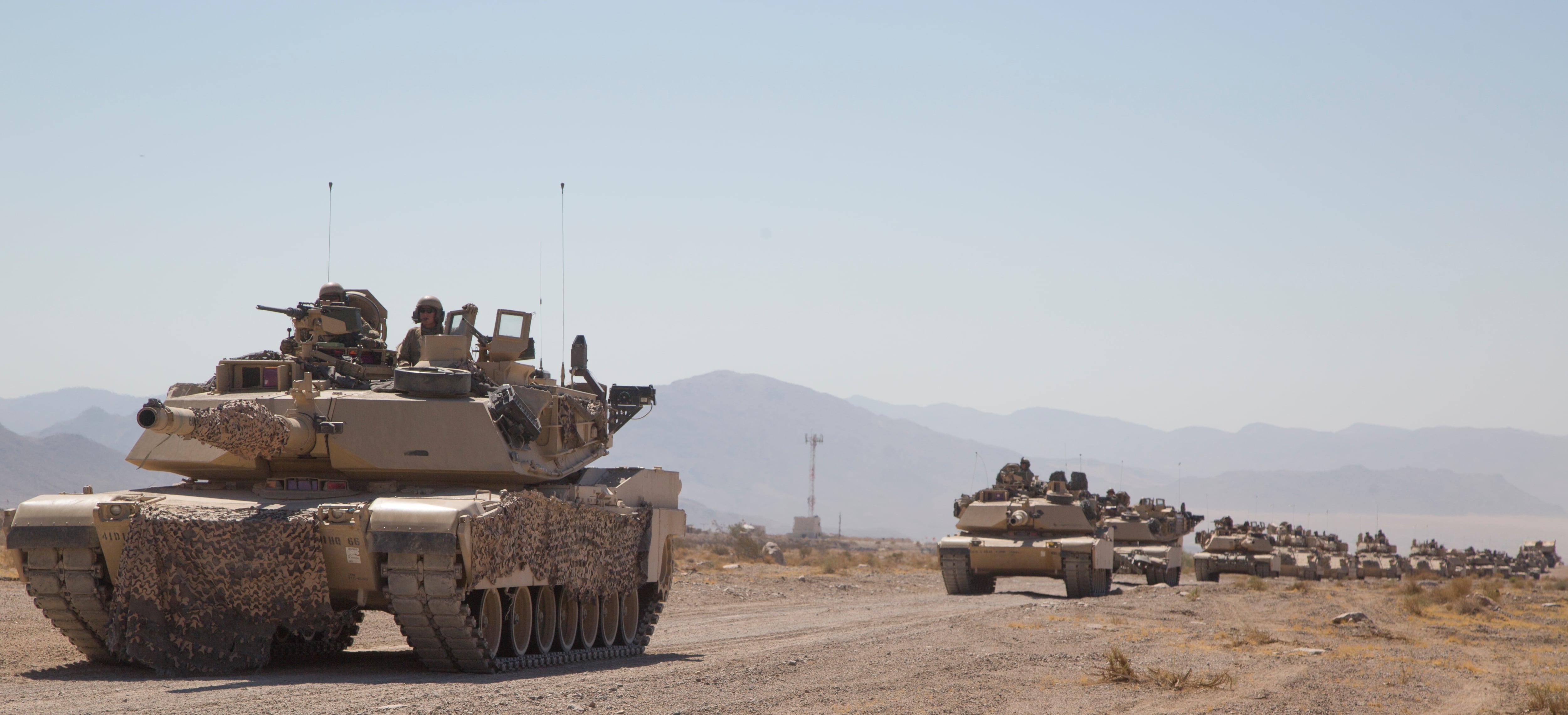As the Army moves forward on its Next-Generation Combat Vehicle program, a variety of problems that need solving are being hammered out at the service’s center for vehicle research — from batteries to targeting threats to advancing autonomous vehicle fleets.
Developers with the Tank Automotive Research Development and Engineering Center recently completed successful testing on its Modular Active Protection System, or MAPS, program.
The MAPS base kit is an array of sensors and countermeasures used with the Modular Active Protection Systems Controller, giving vehicle crews a single solution to run APS for incoming threats such as enemy drones or anti-tank weapons.
RELATED

Earlier this year, the Army awarded a $193 million contract to Leonardo DRS for its Trophy APS on the M1 Abrams tank.
The program conducted four “soft kill” demonstrations using virtual threats with the system and controller.
Bill Beyer, MAPS Virtual Demonstrator lead, said in a release that the base kit would move into the vehicle program portfolio by mid-2019.
Hard kill, or actual live targeting and destruction, is scheduled to start in December.
This week, TARDEC also conducted another round of leader-follower capabilities demonstrations using short-range communication radios and multiple vehicles at the American Center for Mobility in Ypsilanti, Michigan.
Michigan is a rare state that allows for autonomous vehicle testing on public roadways; others confine such testing to closed tracks.
This aims to meet an Army requirement to have 70 unmanned convoy trucks by 2020. The Expedient Leader-Follower initiative looks to partner a single manned vehicle with nine unmanned vehicles, reducing the number of soldiers on sometimes vulnerable convoys.
Another TARDEC push, aligned with NATO research, is using advanced software to predict the best mobility options for ground vehicles.
New computer modeling approaches are using results from years of research into how different vehicle platforms perform on a variety of surfaces.
The focus with the NATO partnership is to streamline data for use in the European theater.
A 900-acre test site at the Keweenaw Research Center in Franklin Township, Michigan, lets researchers test vehicles rolling on soft soil, downed telephone poles, curbs, rocks, boulders and 30 percent slopes.
Those tactile real-world obstacles are now fed into data models so that testing in virtual space can speed development, officials said.
“We’ve digitized every pebble in the proving ground here into a database, and they can have that database. So, they can drive that vehicle through the terrain in the computer and try to predict the mobility, as we call it, of that vehicle going through that rough terrain,” said Jay Meldrum, the research center’s director.
Beyond driving the vehicles and keeping them safe from incoming projectiles, the command also recently committed to find gasoline alternatives for its fleet.
TARDEC and the U.S. Department of Energy partnered to develop and implement hydrogen fuel cell technology in the vehicle fleet.
Hydrogen fuel cells work by moving hydrogen molecules through a medium that strips the electrons. The electrons then move as electrical power, which is used to recharge batteries or power electrical devices such as the motor.
“We think hydrogen as a fuel source, and the fuel cells that generate electricity from the hydrogen, will enable enormous capability for our warfighters,” Paul Rogers, director of TARDEC, said in a release.
The applications go beyond fuel efficiency and reducing fuel logistics burdens.
“Vehicles using hydrogen run on electric motor propulsion, giving very low noise and thermal signatures while in operation,” Rogers said. “Additionally, we can generate valuable electrical power using hydrogen fuel cells that currently requires noisy and heavy generators.”
Todd South has written about crime, courts, government and the military for multiple publications since 2004 and was named a 2014 Pulitzer finalist for a co-written project on witness intimidation. Todd is a Marine veteran of the Iraq War.





